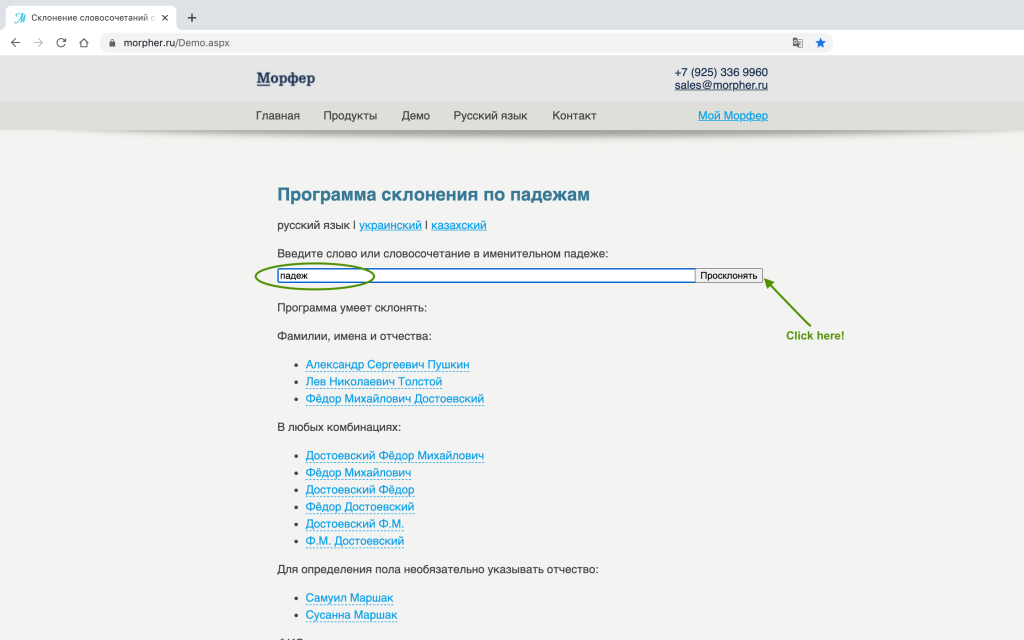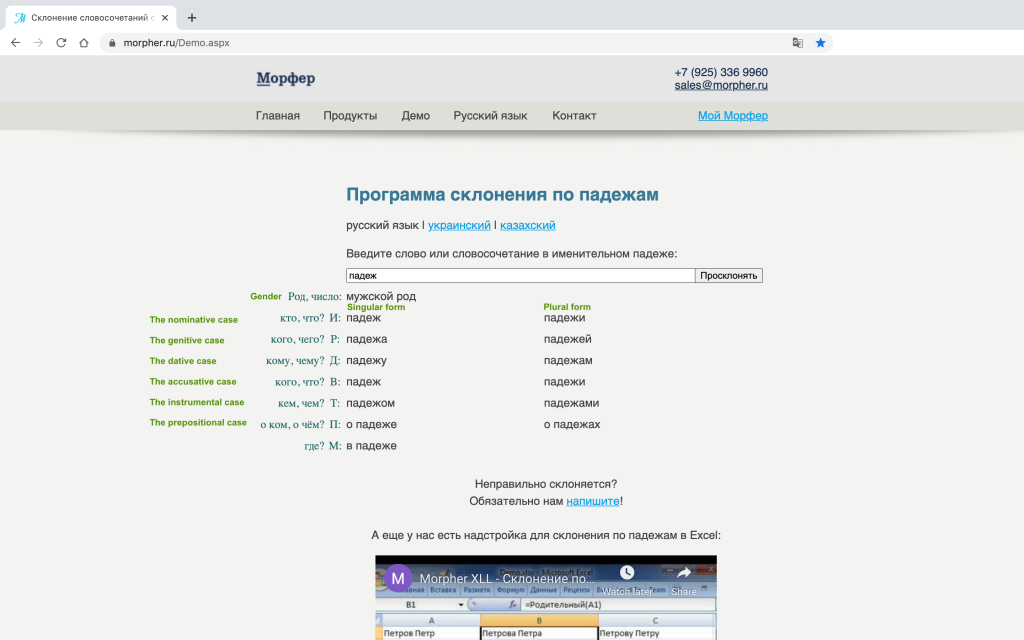After reading the Unlocking Russian grammar guides on the uses of each of the 6 grammatical cases in Russian, it’s time to put into practice what you have learnt. Alongside reading sentences in Russian from books and magazines to attempt to identify cases, you can also take advantage of the wealth of free resources for practising case declension online.
Practise Russian (Boshdmg)
Practise Russian (Boshdmg), offers Russian case declension drills and has a well-designed, minimalist interface, which makes for a refreshing change from the clunky and grey nineties-era web design which tends to predominate in independent learning resources found online for the Russian language. The card exercises are neatly divided by grammatical number and verb conjugation can also be trained. head to the page here.
Russian For Free
Russian For Free , provides activities on the six grammatical cases in Russian for beginner, intermediate and advanced learners. The interface is modern each exercise contains just 10 questions, allowing you to control the length and intensity of your grammar practice. Amazingly, the website is also available in Spanish, so if you’d prefer to learn Russian through Spanish, head to the page here.
Practice Russian
Practice Russian features tests on nouns and adjectives amongst other parts of speech and phrases, which are customisable by the user. This means that you can decide which case to review and the grammatical number (that is, singular or plural). A noun or adjective will appear on the screen and you’ll be asked to enter a particular declension form in line with the default settings, or the specific customisation changes you made. An on-screen Cyrillic keyboard is provided for your benefit if necessary. Be sure to select ‘go’ after each entry, otherwise you will encounter a glitch with the program.
Memrise
Memrise is a popular language-learning application with a web-based platform, which has spaced repetition at the core of its philosophy. Users contribute courses to the community and therefore there are plenty of interactive resources available to assist you with case declension. Below I have listed some of the most useful ones:
1. ToastedMonkey’s course, published here , covers declension for all 6 grammatical cases in Russian with respect to pronouns, nouns and adjectives.
2. OneLifeLog’s course here, teaches the declension of nouns, pronouns and adjectives and comes complete with audio and images.
3. Goose525’s course, located here , trains you on identifying the case of nouns and adjectives, without nestling these parts of speech inside of sentences. Be quick! – this last test is timed.
4. JoshNadeau’s course here is also commendable, with the modules concerned with grammatical course in the course (though be aware that the correct spelling of genitive is well, genitive – please communicate this to the creator if you can work out a way to do so!)
5. SallomanDanilo’s course, available here , centres upon adjectival endings.
6. LinguistCrow’s course, found here , helps you the memorise the questions associated with each case.
7. TStockton’s course here, introduces you to some of the most commonly used verbs associated with each case (that is, those verbs which trigger the use of a certain case).
Clozemaster
Once you get to a stage where you are relatively comfortable with the declensions of the grammatical cases in Russian, you can use Clozemaster to test your ability to anticipate the missing vocabulary, or the correct declension of a missing word. The program incorporates the philosophy behind spaced repetition into the technology in order to help you store information acquired through game play in your long-term memory.
Russian from Russia
Unlike many of the courses in this list which adopt text-based approaches to learning the case declensions in Russian, the Russian from Russia Youtube channel utilises the language-learning technique called drilling in videos of under 10 minutes in length. The entire video is in Russian, so simply translate any vocabulary that you do not understand using translators such asGoogle Translate, DeepL, or Yandex. Unfortunately, as of August 2020, drills are only available for the genitive, prepositional, instrumental and dative cases.
Russian Grammar
Russian Grammar is another great Youtube channel which will hold your hand throughout the process of learning case declensions by explaining the rule behind each change in form. With each pause, you have a moment to attempt to guess the correct ending before it is provided. The grammar series for the genitive case can be found here , the dative case here , the instrumental case here , the prepositional case here and the accusative case here and here. The nominative case is the basic dictionary form of various parts of speech and is relatively straightforward, so there is no video guide to it. You can simply read my comprehensive guide to the nominative case in Russian here, which explains everything you could possibly need to know about the nominative case as a learner.
Resources
Below, you’ll find excellent resources for determining case in Russian. For your benefit, you’ll also find translations of the most important text in the images below.
Morpher.ru
In order to determine the case of a word, enter the nominative form of the word in the search field of the case declension generator here. The website is in Russian, but don’t be frightened: you can easily navigate it despite this. However, if you feel more comfortable with a translated page, use this Google Translate extension from Google Chrome to switch the text to your native language, or copy and paste the text into a translator of your preference, such asDeepL,Yandex or Google Translate.
Morpher presents you with the grammatical gender and grammatical number of a word, as well as the questions associated with each case alongside the declensions. In the first column, you’ll find the singular form for the relevant gender, whilst in the second column, you’ll find the plural form for the relevant gender.
The letters at the beginning of each row stand for the Russian version of the name of each case:
|
И менительный падеж
|
The nominative case
|
|
Р одительный падеж
|
The genitive case
|
|
Д ательный падеж
|
The dative case
|
|
В инительный падеж
|
The accusative case
|
|
Т ворительный падеж
|
The instrumental case
|
|
П редложный падеж
|
The prepositional case
|


Skloneniya.ru
After entering the basic form of a word in the field provided, click ‘Склонять’ and you will be presented with a series of words organised by case and number.
Again, the website is in Russian, but there is no need to be alarmed. You can easily navigate it without understanding a word. Though, as mentioned before, should you wish to translate the text, simply click on the Google Translate extension for Google Chrome, or copy and paste the text into a translator of your preference, such as DeepL, Yandex or Google Translate.
Beyond stylistic elements, the main difference between Morpher and Skloneniya is that whilst Morpher presents you with the grammatical gender of a word and the questions associated with each case alongside the declensions, Skloneniya goes further and writes out the full name of each case (which is ostensibly lacking on Morpher), in addition to the part of speech , grammatical number , grammatical gender , and animacy of a word.



